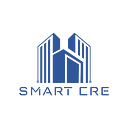Thanks to the internet, smartphones, computers and IoT, data is being collected everywhere in the world, in every aspect imaginable. But the rise of Big Data does not stop for commercial real estate — quite the contrary is true. Buildings can collect so much information, starting from the planning phase to the construction and lastly operating phase. New technologies, such as BIM, allow professionals to make the most out of this data.
Definition
BIM or Building Information Modeling is a term for a solution and process that aims to make planning, construction, and operation more efficient, by relying on various data. It helps to automate processes and can make them accessible for several people/parties at the same time.
This can be applied to different physical assets such as streets, public infrastructure, bridges, tunnels but also real estate. It will most often be commercial real estate, as it is way more complex than residential buildings and offers more information sources.
Building Information Modeling software can have an overwhelming number of functions and features — often they are very complex. Some of the most important ones for commercial real estate are the following:
- 3D Building Concept Designs and Modelling
- Structural Design and Physical Properties
- Electricity, Heating, Gas, … Infrastructure Design and Management
- Features for Planning, Constructing and Operating a Building
- Collaboration with Multiple Users
BIM software can have multiple levels of complexity, which stand in relation to the number of features. These classes can be used to determine the degree of digitization of a real estate project and can also be required by certain parties such as governments to get funding for public projects.
- Level 0
At this stage, projects are either paper-based or with low detail 2D sketches. It is the simplest form of BIM and does not allow for any collaboration. - Level 1
From here on, the information of a building will be more structured and 2D as well as 3D CAD is used. Collaboration is still minimal, and moderation of a dedicated person is required. - Level 2
From level 2 on, collaboration is playing a major role and allows several users to exchange information. The building data is very structured and can be viewed as 3D models. This is the currently most advanced form of BIM. - Level 3
This stage of building information modeling has not been reached yet. It includes international, open data standards, extensive collaboration with various different parties from all parts of the industry, detailed cost management and support for the whole lifecycle of a building.
Advantages
BIM software can have many advantages for different use-cases within the real estate industry. This includes design, architecture, construction, operation and management.
- Faster and more efficient collaboration
- More detailed design and visualization of projects
- Cost control
- Real-time data analytics
- Reduced risk and fewer maintenance costs
- Improved safety on site
- More efficient building management
- Higher quality and safer buildings
Examples & Costs
The pricing can be quite hard to estimate as it depends on the solution and number of functions you need, as well as the size of your team. Generally, it can range between a few hundred to a few thousand dollars per year, per user. A popular solution such as Autodesk BIM 360 starts at $480/yr., per user and Revit starts at $2,425/yr.
According to different sources such as projectmanagernews, dormakaba and softwareconnect, the most popular BIM solutions are the following:
Conclusion
There are many big advantages of using a BIM solution, especially for large and complex commercial buildings. This software can be used for the whole real estate lifecycle and will be a requirement for many projects nowadays and in the future. If you should implement BIM, depends on your capital requirements, the size of your staff and the amount of features you actually need from it in the end.
If you want to find out more about smart and sustainable building technology, please take a look at our blog and glossary.
